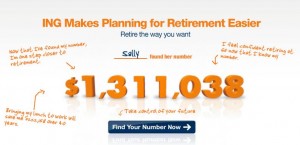 Last week I called out that I had an over-supply of business ideas, simply because I don’t need them [AJC: I am meant to be retired, you know?!] …
Last week I called out that I had an over-supply of business ideas, simply because I don’t need them [AJC: I am meant to be retired, you know?!] …
… much like taxis and police who are never there when you need them, but seem to pop up everywhere when you don’t 😛
Brandon proposed a possible solution:
I think I remember you saying you don’t like partnerships but you could buy it with your friend and have him run it day-to-day. If he can still assure you of those numbers when he has skin in the game then it’s a smart in my opinion.
Sure, it’s a potential Making Money 301 solution for somebody who is not quite ready to fully let go of their business – or wants to dabble as a ‘hobby’ (as in my case) – without needing to be fully hands-on i.e. become a ‘silent partner’.
I have a friend who started off as a competitor (I have a whole string of competitors-turned-friends, but that’s a whole other story) and ‘retired’ when I did, but unless his Number was miniscule (in terms of the annual lifestyle income that he can draw off it), he can’t really retire whereas I can (he made $3 mill; put $1.8 mill. into a house; bought a couple of cars and so on, which leaves him about $800k to ‘live’ off … not possible for someody who lives in a $1.8 mill. house!) he needs to work again.
So, he’s looking to buy a business and have me invest 50% ‘silently’ … except that I’m not investing in any businesses as a MM301 ‘passive investment activity’ as I don’t believe that there’s any such thing as a ‘passive business’ – and, very few truly ‘passive investments’.
Now, that brings me back to my ‘retirement businesses’:
They aren’t part of my MM301 portfolio … they are the ‘travelling … mentally’ part of my Life’s Purpose; in other words, I wouldn’t like to LOSE money on them, and I’d really be happy if I actually MADE money on them, but their real purpose is to exercise my mind: an expensive form of Sudoku 🙂
So, my strategy is to do a LOT of them and invest only a LITTLE (financially, emotionally, and physically) in each …
… which brings me back to Brandon’s idea to invest with my friend who is already the CFO of the business that I mentioned in that post:
– One of the reasons why I am considering the business is that it has an excellent management team (once the owner/founder is removed) whom I feel would perform well with minimal supervision, but a lot of strategic direction,
– I don’t want to have partners – even my friend – for a lot of reasons, the most pragmatic being the power afforded to minority shareholders (i.e they may only own a small % of the shares, but that can be enough to make them a real pain in the butt if things go awry),
– Yet, I want to incent them to profitably grow the business.
So, the solution may be Simulated Equity [AJC: a term that I just made up 🙂 ] … here’s how it works:
There are two financial benefits of stock ownership for employees:
1. A distribution of profits, and
2. A growing asset, redeemable upon sale of the enterprise or their stock, whichever comes first.
The first one is easy: having, say, 5% of the stock in the company affords you 5% of the DISTRIBUTED profits; that means the Board of Directors (and, as a minority shareholder, you may or may not get a vote here) decides what % of profits made that year should be distributed to the shareholders and what % should be kept to help grow the business.
The problem with the second is that the employee may receive the stock, but can then sell it whenever they wish (after any exercise and / or vesting periods) … where’s their incentive to stay and grow the business once they’ve sold their stock?!
My solution – ‘simulated equity’ – is simple:
I will offer each key employee (e.g. my friend):
a) A profit share – this means that the employee might get 5% of all of the profits earned EVEN if the Board of Directors decides not to distribute all profits that year (in other words, the employee gets their FULL 5% share), and
b) A bonus on sale – I might offer a, say, bonus equal to their profit-share percentage of any sale price of the business. This way the employee gets an incentive to stay on and help with the eventual EXIT PLAN for the business … good for me, great for him!
In other words, the employee gets the financial benefits of ‘partnership’ … in return, I get a committed employee who benefits in proportion to my benefits … and, I don’t lose any control!
What do you think?





 In Monday’s
In Monday’s